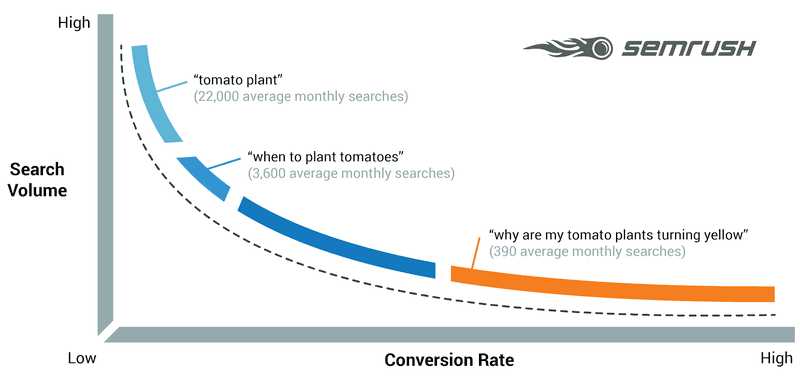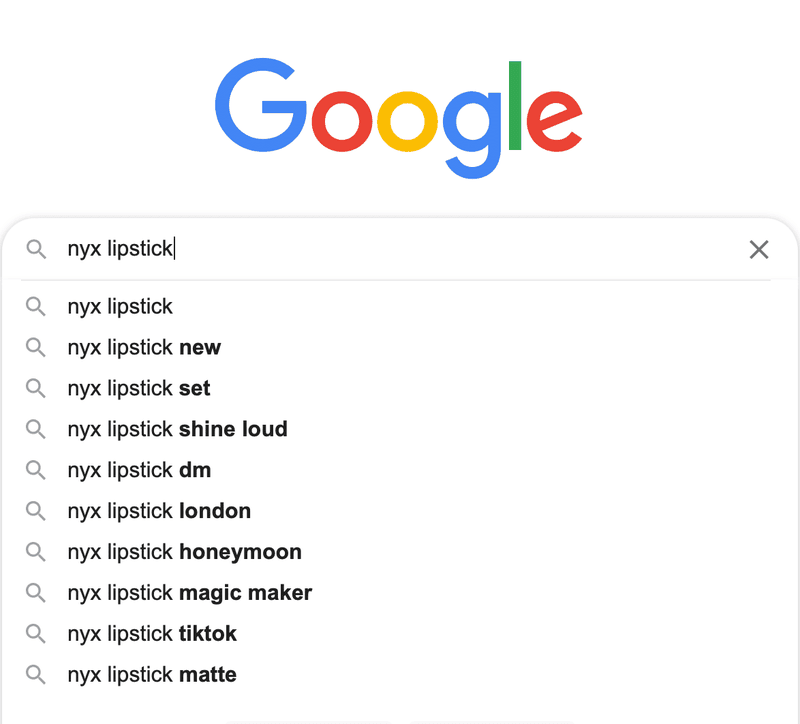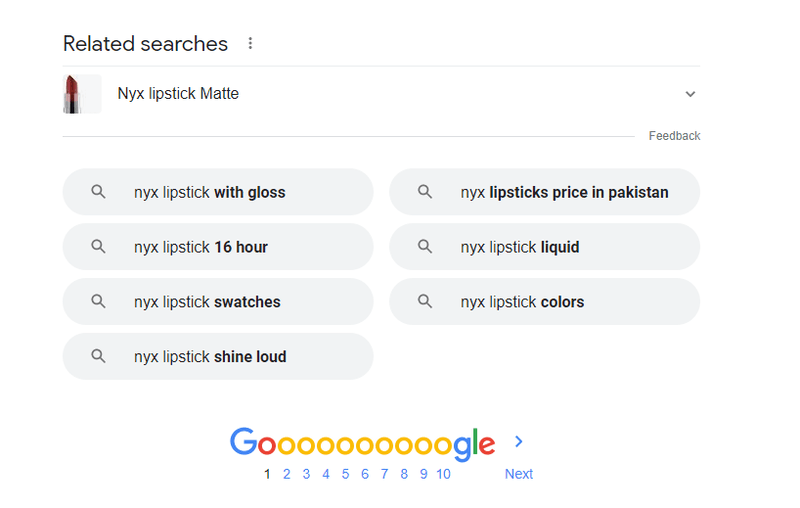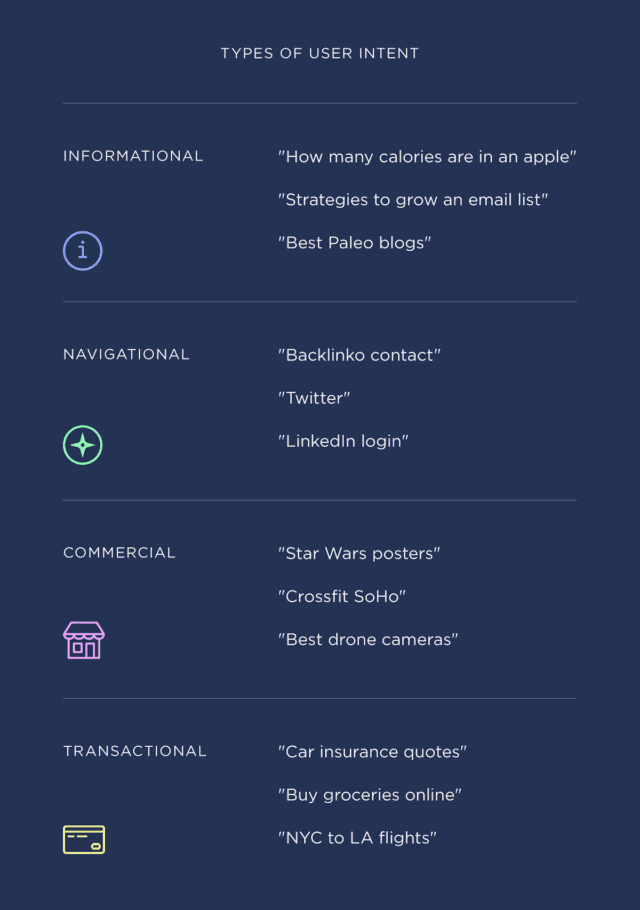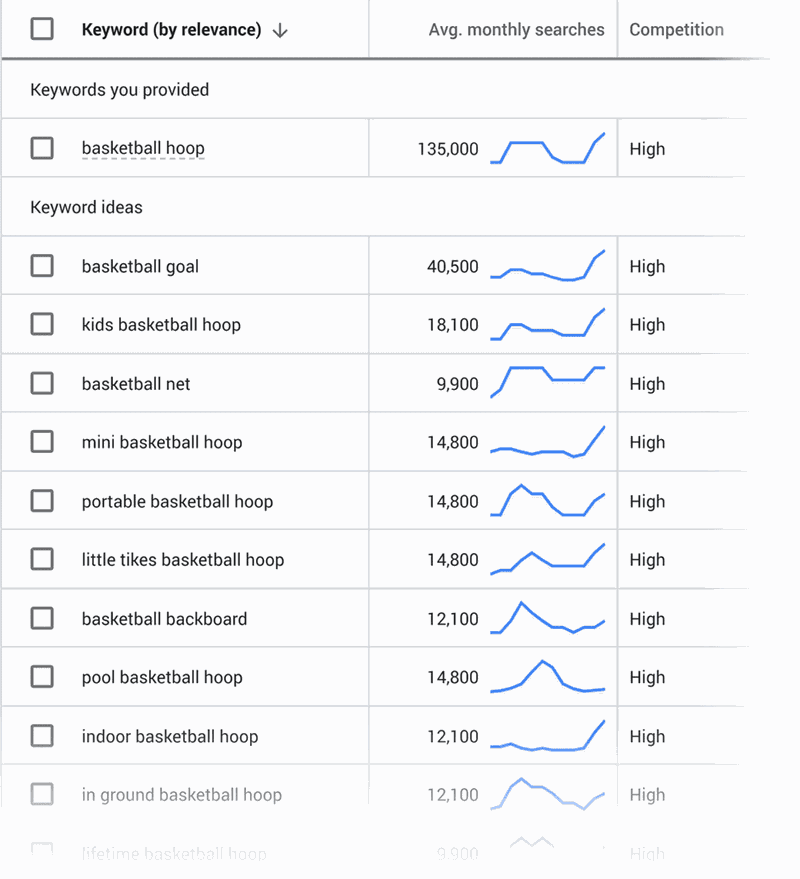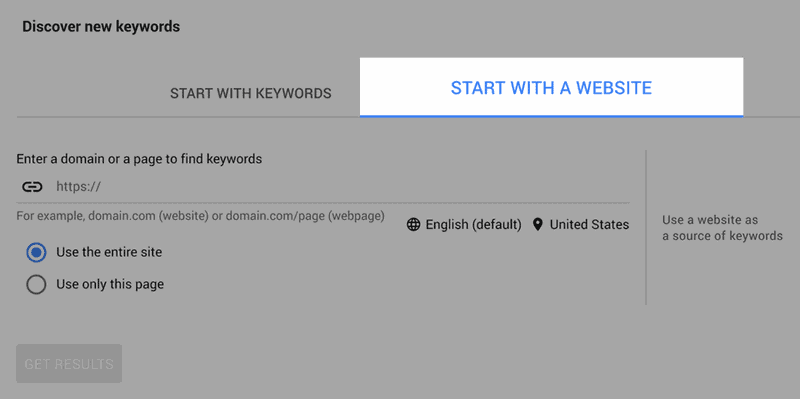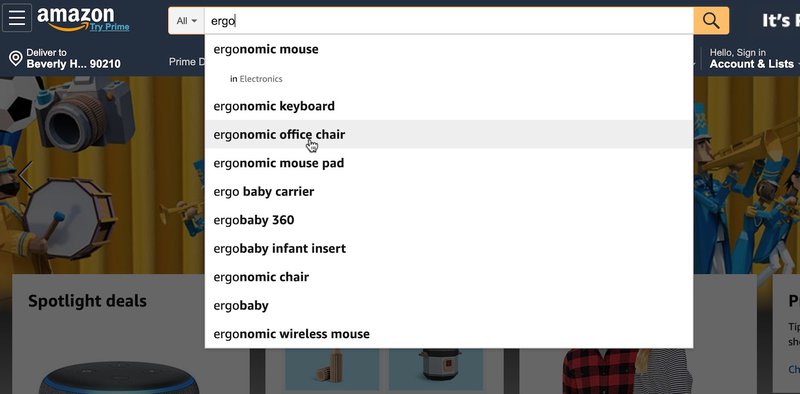How to Find the Top Keywords for Your eCommerce Brand [+5 Power Tips]
Here are some of the best ways to find the top eCommerce keywords for your brand. We talk about keyword tools, competitor research, SEO checklists and much more.
Published November 5, 2024
![How to Find the Top Keywords for Your eCommerce Brand [+5 Power Tips] main image](https://entail.mayple.com/en-assets/mayple/61276a8df9b391474705eee8_HowtoFindtheTopeCommerceKeywords2_b9b3c9df3d897f16fa6acf938d449c64_2000-1699777215446.png)
As Brian Dean, one of the world's leading experts on SEO, explained on our podcast recently, "Optimizing your eCommerce site for search is a much simpler task than doing SEO for other industries". That's easy to say for an SEO expert, right?
eCommerce sites have a simple structure. All you would really need is to optimize the product titles and descriptions on your product and category pages, and you'll be all set. The challenge is finding the right keywords that will help your site rank well in an already competitive industry.
The upsides are HUGE. Getting on the top of search results for regular Google searches as well as Google Shopping can almost guarantee leads and sales. And could propel any eCommerce business to the top.
But how do you do it?
In this post, we break down the exact strategies you should use to find the best keywords for your business.
Keywords are the foundation of eCommerce SEO
First, let's go to the basics. Whether you are a business owner or own an eCommerce SEO agency, keywords are what your potential customers are putting into their searches to find the products they're looking for. This could be on search engines (Google, Bing, Yahoo) or on online marketplaces (Amazon, eBay, Walmart).
So, for example, if your potential customer is looking for running shoes they could write "shoe deals" or "running shoes" or "Nike Pegasus" and get a different result for each of these. And if you're a shoe company you need to strategically use the right keywords to get the ideal customer to land on your site.
Types of keywords
There are three main types of eCommerce keywords that you need to use.
- Head keywords
- Long-tail keywords
- LSI keywords
Let's dive in on each one.
Head Keywords
Head keywords (sometimes called short-tail keywords) are broad terms that are usually no more than a couple of words. For example, a broad keyword could be "sneakers", "women's t-shirts", or "hats". They are generally very competitive and very hard to rank for.
Long-tail Keywords
A long-tail keyword is a longer phrase of three or more words that shoppers use to get more specific results. If you've ever shopped online before you would know that one or two words won't help you find that perfect mother's day gift for your mom. You would need to get a little more descriptive.
An example might be "Nike women's running shoes white" or "best flower shops in San Francisco".
These longer keywords have much fewer searches per month but are much less competitive and easier to rank for. So they result in a higher conversion rate. And that's where most eCommerce brands focus on.
The challenge is that there are many different ways to describe the same product. The question then becomes - how do you make sure to find all the related long-tail keywords? That's where LSI keywords come in.
LSI keywords
LSI stands for latent semantic indexing and it is used to describe related keywords to a particular search term. So let's say you type a word into Google search and you get a list of autocomplete entries. Those are LSI keywords.
You will see another batch of keywords under the "related searches" section on the bottom.
The same autocomplete feature exists on social media platforms and online marketplaces. So if you're trying to rank on relevant searches in places like Pinterest or Amazon then you should definitely use the keywords that each of those platforms displays for you.
LSI keywords are important for two reasons. First, they help the user find what they are looking for. So the more you incorporate all the different ways they could say the same thing, the better.
Second, the more you weave these LSI keywords into your content, this tells Google that your page is more relevant for the specific topic. And then you have a higher chance of moving up in the search results.
According to Backlinko, Google's new way of ranking search results is to look for an overall topic of the page. The search engine uses words that frequently occur together, or keyword clusters, to understand an article's main topic.
The classic example is the term "apple". If you are searching for terms like "apple pie" or "pink lady" then Google knows that you’re searching for the fruit. If you include terms like "iPhone XD" or "Tim Cook" then you’re obviously searching for a smartphone or information about Apple the brand.
Ways to find LSI keywords are:
-Think of synonyms -Come up with related concepts -Look for related searches on Google -Use a keyword tool like the Google Keyword Planner tool or LSI Graph. -Use a keyword Chrome extension
It's all about the search intent
Any search engine optimization expert will tell you that SEO is all about the search intent of the user. That's what the last few Google updates have been focused on. And this is crucial because if you optimize your page for a list of specific keywords, but the page doesn't match the user intent, then it will likely not rank.
There are four types of user intent. Informational intent: this is used when searchers are looking for information. An example could be "best type of shoe to use for softball", "how to find your shoe size", "types of winter coats I need for Maine". If you want to rank for these you would need to create high-quality content like shopping guides or how-to blog posts.
Navigational intent: this is when a searcher is looking to get somewhere online. An example could be someone typing "Amazon" or "Blendjet" to get to those brands' homepages. These are usually branded keywords and it's important that you rank for them.
Commercial intent: this is when the user is still shopping and wants to compare products. An example could be "Star Wars posters" or "best hair salons in my area".
Transactional intent: this is when a user is in the last stage of the buyer journey and they are ready to buy. They know what they want and are searching for the best price or way to get it. An example could be "cheapest white t-shirt" or "Allbirds coupon code".
There are two other factors to consider when you’re looking for the perfect keywords for your eCommerce brand.
Search volume
Search volume is a measure of the monthly searches for a particular keyword. Head or shorter keywords have really high monthly searches - 1,000-100,000+. Long-tail keywords usually have 100-1,000 searches per month.
Unfortunately, there’s no magic number for the right search volume, it varies based on industry and type of business. For product titles and product descriptions, you should pick all the main keywords first and then intersperse as many modifiers and long-tail keywords.
For blog content, a best practice is to pick a broad target keyword that is somewhere in the middle of those two extremes, one that gets around 2k-8k searches per month. And then incorporate several topics in each article around long-tail keywords related to the main keyword.
Keyword difficulty
Another important factor for picking the right keywords is keyword difficulty, sometimes referred to as “SEO difficulty” or “keyword competition”. It’s a measure of how difficult it is to rank for a keyword on Google, or in other words how competitive a particular keyword is.
Recent research by Backlinko suggests that a measure for keyword difficulty on SEO tools is not reliable. So you need to look into other factors - the number of referring domains, the domain authority score (DA/DR), the number of backlinks, and their meta titles and descriptions.
All of these factors should go into your evaluation of how difficult a keyword is to rank for and whether it’s the right one to use for your pages.
How to find the best eCommerce Keywords
Here are several ways to get your hands on the best keywords for your brand.
1. Brainstorm your initial list
First things first, make a list of all the keywords you can come up with for each of your products. Then take each main keyword and add modifiers to it. If you were selling floor lamps you would create a list similar to this one:
- Floor lamp
- Floor lamp for bedroom
- Floor lamp for living room
- Floor lamp mid-century modern
- Black floor lamp
- Brown floor lamp
- Arc floor lamp
One easy way to do this is to group these modifiers together by the characteristic that describes your product. You can use things like color, dimensions, type, shape, texture, materials, benefits, the purpose of use, or the type of consumer it's made for (family, men, women, kids).
2. Research your competitors
Another great way to conduct keyword research is to look at the top-ranking results on both Google and Amazon for competing products (or products most similar to yours).
- Look for keywords in the product titles and product descriptions.
- Look at their modifiers.
- You can even glance at their product reviews to see what kind of benefits the customers described. Use these benefits as keywords in your own listings.
- Look at the keywords they include in their product page URLs.
Once you get a list of target keywords that your competitors use, along with long-tail and short-tail keywords, you should see what your listings are missing. This is similar to a content gap analysis that an SEO expert would do on your site, except here you should be doing it on each product and category page.
Pro tip: paste in your competitor’s site URL into any keyword research tool to get a list of the keywords that they use, and to see which of their content pieces is the most popular.
Speaking of keywords research tools, here are a few of our favorites.
3. Use the Google Keyword Planner Tool
Google Keyword Planner is perhaps the easiest tool to use for keyword research. It’s a free tool that lets you search for similar keywords and get ideas of long-tail keywords you could use. It also lets you select the location, language, search networks, and date range.
The one flaw with Google Keywords Planner is that you don’t get very many out-of-the-box ideas for keywords. Google likes to display those broad keywords that are the most competitive (and have the highest bids).
So what you should do is to go to the “Discover New Keywords” area and click on “Start a New Website”. Then put in one of your competitors, and voila! You get a list of hundreds of keywords that your competitors couldn’t have even seen.
4. Use Ubersuggest
Ubersuggest provides you with much more information than Google Keyword Planner and it’s really easy to use. It’s a free SEO tool that has a lot of great features but its main specialty is keyword research.
When you put in your target keywords, the tool gives you a comprehensive list of related keywords that you can use to boost your rankings. That includes a list of questions, comparison search terms, and a list of preposition keywords. Ubersuggest displays the search volume, CPC, paid difficulty, and SEO difficulty for each keyword.
It also has a great feature for questions (how-to’s) and blog post ideas. Click over to the content ideas section and put in your keywords. Then you get a list of all the top blog posts with their number of visits, the number of backlinks, and social media shares.
5. Use Amazon for keyword research
Even if you don’t sell your products on the world’s biggest marketplace, you can still use it to find the perfect keywords for your site. When you do a search, Amazon gives you a bunch of autofill suggestions.
You can use Amazon’s suggestions from their search bar to come up with better modifiers for your keywords. Things like type, color, features, etc. If you do this manually it will take quite a lot of time. So a better way to do this would be to use a tool like the Amazon Keyword Tool to export a list of keywords.
Pro tip: Amazon reviews are a great place to find long-tail keywords. Look at the benefits and drawbacks of your competitors’ products that their customers mention. Spot any trends and incorporate them into your own list of keywords.
Automate your eCommerce SEO Strategy
E-commerce keyword research can't be a standalone activity. It needs to be part of a broader keyword strategy for your brand. One easy way to do that is to write out an SEO checklist and have your team follow it. Here’s a sample SEO checklist for a product page:
- Make sure to use all types of keywords in your product title and product description (broad, primary, and long-tail keywords).
- Include as many modifiers related to your product attributes and benefits as possible.
- Include things like instructions, dimensions, ingredients, etc. in your product description.
- Make sure the meta title and meta description are optimized.
- Make sure every image has an alt tag.
- Proofread before hitting publish.
Here’s a sample SEO checklist for blog content:
- Make sure that your target keyword is relevant to your audience.
- Make sure that there’s no duplicate content or keyword cannibalization going on.
- Look up the top search results for your target keyword.
- Optimize your meta title and meta description tags.
- Make sure that you’re hitting all of your keyword clusters on your keyword list.
- Check your image alt tags.
- Check your article length and make sure that it’s long enough.
- Proofread before hitting publish.
Work all of these action items into your processes. Provide specific instructions for your writers and editors to help them implement these strategies for new product pages on your site. This will help improve your search rankings and increase your organic traffic.
Here’s a quick summary of the steps you should take in your keyword research process:
- Come up with relevant keyword ideas for each of your product and category pages.
- Use keyword research tools to see what your competitors are doing.
- Use online marketplaces to see which popular keywords your consumers already use to search for products.
- Optimize your page and continue monitoring your search rankings regularly.

